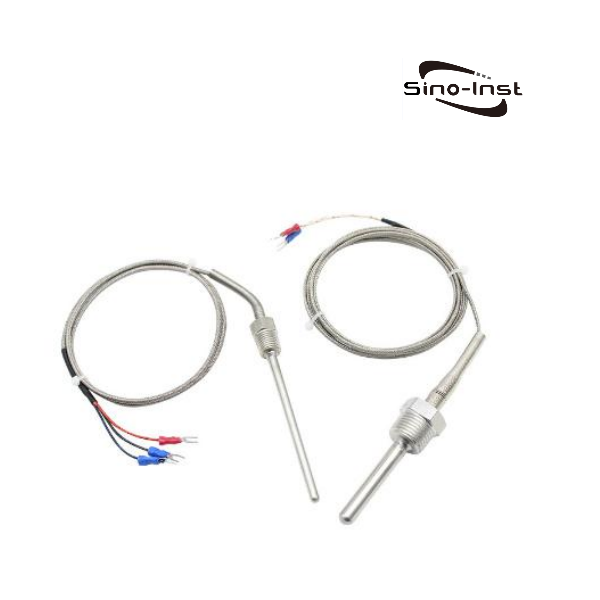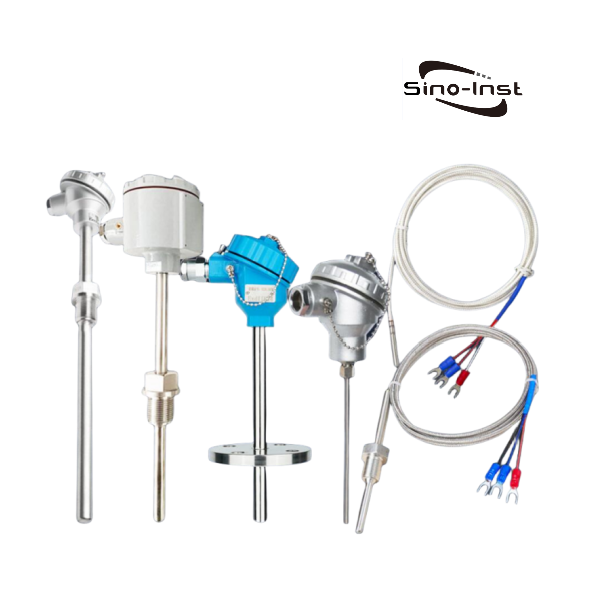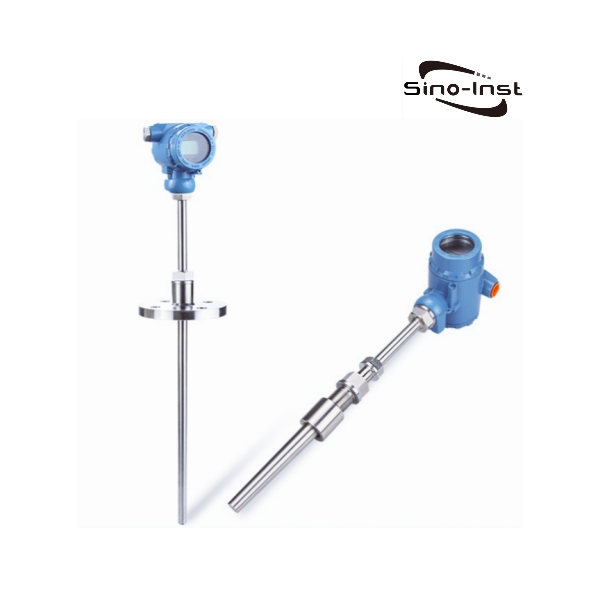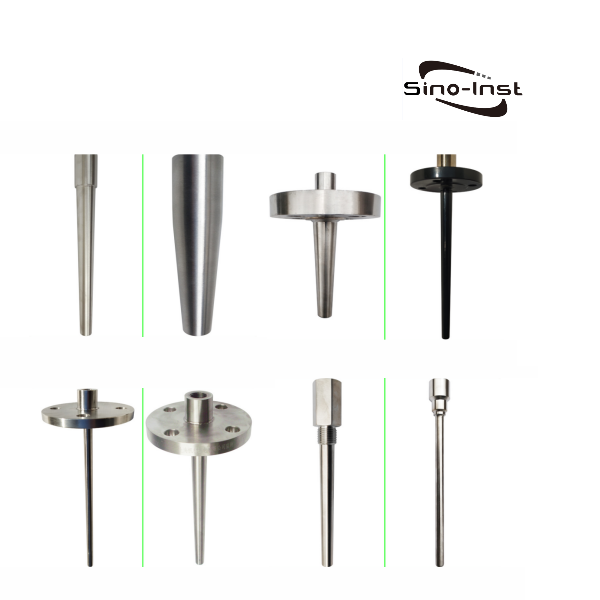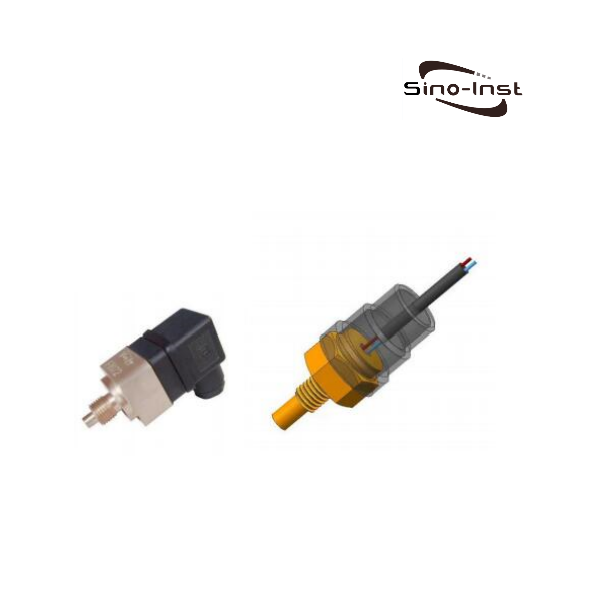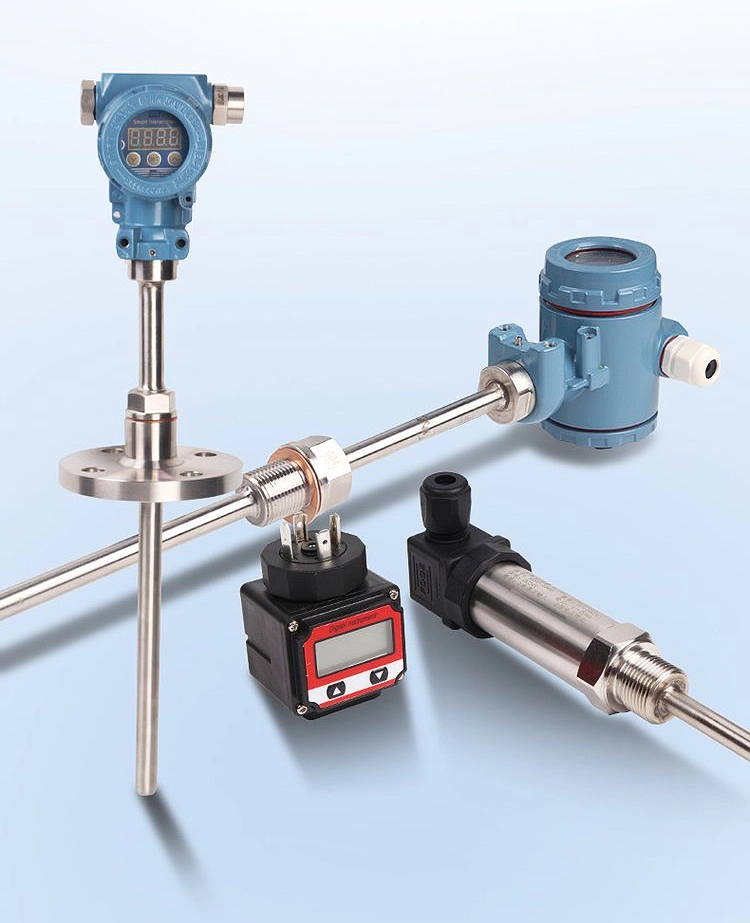
RTD temperature sensors are small devices. They are commonly used for temperature measurement in a variety of industrial applications. These sensors are more accurate and stable than thermocouples and other temperature probes. They are widely used in various industries, including automotive, aerospace, and food processing.
When you need accurate and repeatable temperature readings, Sino-Inst’s RTD temperature sensors are your best choice. We primarily offer three-wire RTD PT100 temperature sensors. Our sensors can be customized. This includes temperature range, insertion depth, connection thread, and cable length.
About RTD Temperature Sensors
“RTD” stands for “resistance temperature detector.” It uses the electrical resistance of metal to measure temperature. As temperature increases, so does resistance. The RTD’s sensing element is typically made of platinum, copper, or nickel.
The RTD sensing element has a temperature range of -196°C to 600°C. Some specialized designs can even reach 1000°C.
How do RTD Temperature Sensors Work?
RTDs operate based on the change in the electrical resistance of metal materials. This resistance increases with increasing temperature. By measuring this change in resistance, the temperature can be calculated. The resistance of a metal conductor is directly correlated with its temperature. As the temperature rises, the material’s resistance also increases.
Resistance-Temperature Relationship:
Resistance and temperature are approximately linear, following the formula:
R(T)=R0[1+α(T−T0)]
Where (R0) is the resistance at a reference temperature (typically 0°C). α is the temperature coefficient (α for platinum is approximately 0.00385/°C).
Common RTD Sensor Types
Featured RTD Temperature Sensors
RTD Wiring Configurations
There are three standard RTD connection methods: 2-wire, 3-wire, and 4-wire. Each method has its own characteristics in terms of accuracy, cost, and applicable scenarios.
1. 2-Wire Connection Method
A two-wire connection method is the simplest and most economical option. This method uses only two wires to connect the sensor. These wires serve as both the power and signal lines.

A two-wire connection method is simple and has the lowest cost. It is suitable for short-distance connections (<10 meters). However, since the connecting wires must have a lead resistance r, the value of r depends on the wire material and length. For this reason, this configuration is only used when accuracy is not a priority.
2. 3-Wire Connection Method
The 3-wire connection method is the most common in industry. One lead is connected to one end of the RTD’s base, and two leads to the other end. This method is often used in conjunction with a bridge circuit.
It compensates for lead resistance. RTD probes with a 3-wire design are one of the most popular temperature sensors. It reduces the effects of wire resistance and offers an accuracy of ±0.5°C, offering the best price/performance ratio. This makes it suitable for most industrial applications. However, it requires matching wire resistance. Even when the current sources are mismatched, residual errors can still occur.
3. 4-Wire Connection Method
The 4-wire connection method improves resistance measurement accuracy. It connects two wires to each end of the RTD. Two of the wires supply a constant current, I, to the RTD, converting R into a voltage signal, U, which is then fed to the secondary instrument.
This connection method completely eliminates the effects of lead wire resistance. It is primarily used for high-precision temperature measurement and offers strong interference immunity. However, this method requires a four-wire connector and more wiring, resulting in the highest cost.
RTD Temperature Sensor Applications
RTDs are widely used in:
- Automotive. RTDs can measure coolant and intake/exhaust temperatures to optimize performance.
- Energy and power. RTDs can monitor transformer winding and core temperatures to ensure grid stability.
- Medical equipment. RTDs can accurately monitor patient temperature and provide precise medical data.
- Industrial electronics. RTDs can monitor the temperature of key components such as motor windings and compressors.
PT100 vs. PT1000
The other properties of Pt100 and Pt1000 are essentially the same. The temperature curves of both are essentially the same, both being relatively straight lines. The PT1000 has a resistance of 1000 ohms at 0°C and 1385.055 ohms at 100°C. But the PT100 has a resistance of 100 ohms at 0°C and 138.5055 ohms at 100°C. This represents a tenfold difference.
PT1000 has a higher sensitivity than PT100. When the temperature of PT1000 changes by 1°C, its resistance increases and decreases by about 3.8 ohms. When the temperature of PT100 changes by 1°C, its resistance increases and decreases by about 0.38 ohms.
PT1000 is suitable for measuring a small temperature range (common temperature range: -50~300°C). PT100 is suitable for measuring a slightly larger temperature range (common temperature range: -200~650°C).
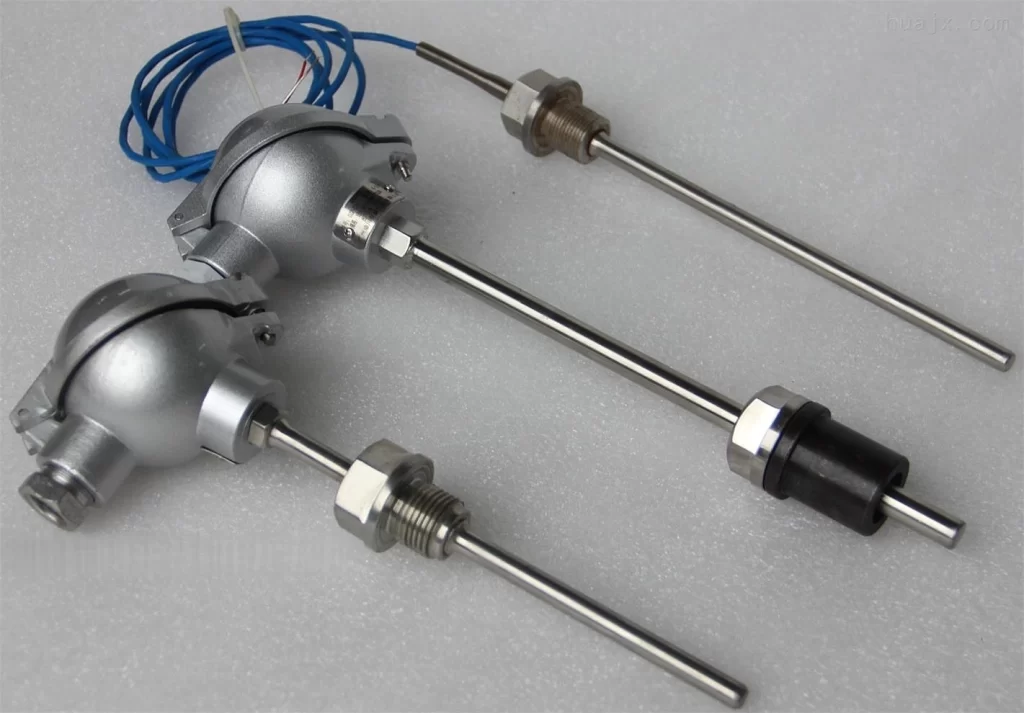
Main Differences Between RTDs and Thermocouples
| Features | RTD | Thermocouple |
| Temperature Range | −200 ~ 500 °C | -200°C ~ 2000°C |
| Response time | 0.5 ~5 s | 0.1 ~10 s |
| Dimensions | Standard RTD sheath diameters range from 0.1250 to 0.2500 inches. | Thermocouple sheath diameters can be smaller than 0.063 inches. |
| Accuracy | RTDs have high accuracy. | Thermocouples have average accuracy. |
| Cost | Higher | Lower |
| Linear | Linear | Nonlinear |
More Temperature Measurement Solutions
A resistance thermometer converts electrical resistance into a temperature signal. Therefore, when measuring process temperature, a resistance thermometer can be equipped with a Pt100. RTD probes with a Pt100 platinum element and a three-wire lead design are among the most popular temperature sensors. They offer accurate measurement, high stability, and durability.
Pt100 RTDs can be connected to transmitters using a two-wire, three-wire, or four-wire system. A three-wire connection is the most common wiring type for Pt100 temperature measurements.
Sino-Inst manufactures and supplies thermocouples, RTDs, and other temperature sensors and transmitters in various sizes. Customization and OEM services are also available. If you need to purchase a temperature sensor or have any technical questions, please feel free to contact us!
-1.jpg)
